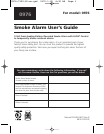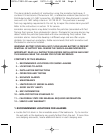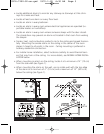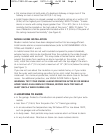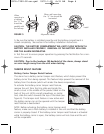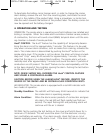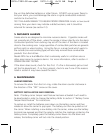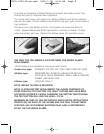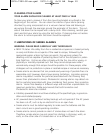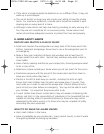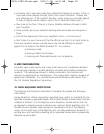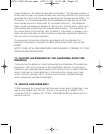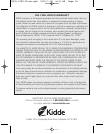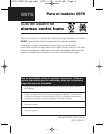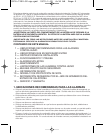• Put smoke alarms at both ends of a bedroom hallway or large room if the
hallway or room is more than 30 ft (9.1 m) long.
• Install Smoke Alarms on sloped, peaked or cathedral ceilings at or within 3 ft
(0.9m) of the highest point (measured horizontally). NFPA 72 states: “Smoke
alarms in rooms with ceiling slopes greater than 1 ft in 8 ft (.3m in 2.4 m) hor-
izontally shall be located on the high side of the room.” NFPA 72 states: “A
row of detectors shall be spaced and located within 3 ft (0.9m) of the peak of
the ceiling measured horizontally” (see figure 3).
MOBILE HOME INSTALLATION
Modern mobile homes have been designed and built to be energy efficient.
Install smoke alarms as recommended above (refer to RECOMMENDED LOCA-
TIONS and FIGURES 1 and 2).
In mobile homes that are not well insulated compared to present standards,
extreme heat or cold can be transferred from the outside to the inside through
poorly insulated walls and roof. This may create a thermal barrier which can
prevent the smoke from reaching an alarm mounted on the ceiling. In such
units, install the smoke alarm on an inside wall with the top edge of the alarm
at a minimum of 4” (10 cm) and a maximum of 12” (30.5 cm) below the ceiling
(see figure 1).
If you are not sure about the insulation in your mobile home, or if you notice
that the outer walls and ceiling are either hot or cold, install the alarm on an
inside wall. For minimum protection, install at least one alarm close to the bed-
rooms. For additional protection, see SINGLE FLOOR PLAN in figure 2.
WARNING: TEST YOUR SMOKE ALARM OPERATION AFTER RV OR MOBILE
HOME VEHICLE HAS BEEN IN STORAGE, BEFORE EACH TRIP AND AT
LEAST ONCE A WEEK DURING USE.
2. LOCATIONS TO AVOID
• In the garage. Products of combustion are present when you start your auto-
mobile.
• Less than 4” (10cm) from the peak of an “A” frame type ceiling.
• In an area where the temperature may fall below 40ºF or rise above 100ºF,
such as garages and unfinished attics.
• In dusty areas. Dust particles may cause nuisance alarm or failure to alarm.
• In very humid areas. Moisture or steam can cause nuisance alarms.
0976-7202-02-en.qxd 1970.1.14 6:30 AM Page 4



